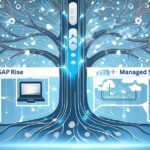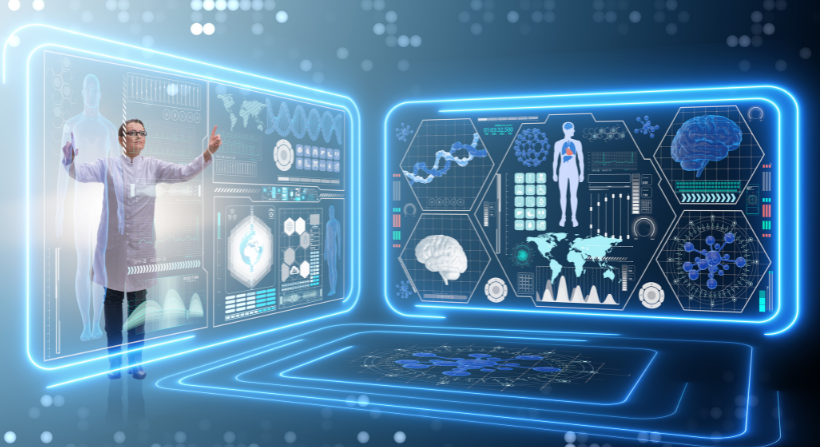The IoT is a transformative technology that has the potential to revolutionize remote patient monitoring (RPM). It allows for real-time tracking and management of patient’s health conditions. IoT, a network of interconnected devices and sensors, enhances healthcare applications by improving patient monitoring, remote care, diagnostics, and treatment. However, IoT solutions also present challenges and limitations that must be addressed for successful implementation.
One of the main challenges lies in security, and at present, North America has the largest share, with Asia-Pacific expected to increase 17 to 22% by 2028.
This blog explores the implementation of IoT solutions, including data security, interoperability, user engagement, and regulatory compliance.
- Defining Remote Patient Monitoring
- IoT Devices Used in Remote Patient Monitoring
- Benefits of Incorporating IoT Devices for Remote Patient Monitoring
- Challenges and Limitations of IoT Solutions For Remote Patient Monitoring
- Empowering Healthcare Through ZirkelTech's Secure IoT Device Development
- FAQs
Defining Remote Patient Monitoring
Remote Patient Monitoring (RPM) uses IoT devices to monitor and track patients’ health data remotely. This allows healthcare providers to collect and analyze patient health metrics like vital signs, symptoms, and medication adherence from patients’ homes or other remote locations. The data is then securely transmitted to healthcare providers. This model offers a more efficient and convenient approach to healthcare.
- RPM allows remote healthcare monitoring for patients, regardless of their location. This is helpful for those in rural areas.
- RPM helps manage chronic conditions like diabetes, hypertension, and heart disease by monitoring health metrics and detecting complications early.
- RPM enables healthcare providers to detect adverse events or health deteriorations promptly. It leads to a proactive approach to care that can prevent complications and reduce emergency department visits.
- It enables patients to manage their health actively by providing real-time health data and self-monitoring tools.
- It facilitates proactive monitoring and timely interventions to enhance seniors’ and individuals’ quality of life.
IoT Devices Used in Remote Patient Monitoring
Remote patient monitoring (RPM) uses IoT devices to monitor patients’ health status remotely, transmitting data for analysis and intervention. These devices provide opportunities for healthcare professionals and patients to monitor their health effectively.
Some applications include;
1. Wearable Devices
- Fitness trackers monitor metrics like heart rate, steps, and calories burned, motivating users to adopt healthier lifestyles and improve sleep quality.
- Smartwatches are also used for health-tracking features like heart rate, activity levels, sleep patterns, and ECG readings.
2. Vital Signs Monitor
- A blood pressure monitor provides real-time data on blood pressure levels. It monitors patients’ cardiovascular health and prevents complications.
- Glucometers are for diabetes management. They enable remote patient monitoring to test blood sugars in diabetes patients to prevent life-threatening ketoacidosis conditions.
- Non-touch digital thermometers measure body temperature without direct skin contact. It reduces cross-contamination risk and enhances patient comfort.
3. Remote Monitoring Kits
- Spirometers are utilized for pulmonary function testing and diagnosing lung infections.
- Pulse oximeters measure the oxygen saturation level (SpO2) and heart rate in a person’s blood. They monitor respiratory function, especially in patients with respiratory conditions like asthma, COPD, or COVID-19.
Benefits of Incorporating IoT Devices for Remote Patient Monitoring
Integrating IoT devices in remote patient monitoring (RPM) offers numerous advantages that benefit patients and healthcare providers.
- Early detection of health issues: IoT devices provide continuous monitoring, allowing for early detection of health issues and patient condition changes. Healthcare providers receive alerts that enable timely interventions to avoid complications or exacerbations.
- Accuracy: RPM devices connect patients, doctors, and professionals on a single platform. GPS location services help address emergencies quickly.
- Patient safety and risk reduction: IoT devices improve healthcare safety through continuous home monitoring. It identifies risks early and prevents complications.
- Convenience: Telehealth offers convenient, flexible, and accessible healthcare services. It improves communication and engagement, enabling personalized treatment options.
- Personalized treatment: IoT-based remote patient monitoring allows healthcare providers to offer personalized care, improve outcomes, and enhance the patient experience.
Challenges and Limitations of IoT Solutions For Remote Patient Monitoring
IoT solutions offer promising opportunities for remote patient monitoring. However, challenges and limitations must be addressed for successful implementation and widespread adoption.
Here are some challenges and limitations of IoT solutions
Data Security and Privacy Concerns
IoT devices in remote patient monitoring (RPM) raise data security and privacy concerns. It’s mandatory to implement robust security measures to ensure the security, authenticity, and availability of patient information. This is necessary for healthcare, as it is highly sensitive and subject to strict regulations.
User Acceptance and Engagement
User acceptance and engagement are important for successfully implementing remote patient monitoring (RPM) using IoT devices. Challenges like device usability, patient education, and motivation can affect adherence and engagement. It may affect intervention effectiveness.
Technical Challenges and Connectivity Issues
Technical issues like device malfunctions, connectivity issues, and network outages can disrupt remote patient monitoring activities and compromise patient care. It’s important to have a strong technical infrastructure, redundancy, and backup strategies to address these challenges.
Also Read: The Role of Big Data in Healthcare Technology
Empowering Healthcare Through ZirkelTech’s Secure IoT Device Development
IoT-enabled Remote Patient Monitoring (RPM) stands poised to revolutionize healthcare, enabling continuous health monitoring beyond traditional hospital settings. By restricting access to patient data to authorized personnel and ensuring reliability, scalability, and user-friendliness, RPM prioritizes the crucial aspect of data security through robust encryption and authentication methods. Addressing technical challenges such as wireless signal strength and bandwidth limitations is vital to guaranteeing the success of RPM.
Shape the future of connected healthcare solutions with ZirkelTech. Our versatile services cover app development, extensions, integrations, analysis, and testing across all major frameworks. Partner with us and spearhead innovation in the IoT landscape.
Contact ZirkelTech today – Your Catalyst in IoT Innovation.
FAQs
How does remote patient monitoring improve patient outcomes?
Remote patient monitoring (RPM) enhances patient outcomes by promoting early detection. It manages chronic diseases, enhances medication adherence, expands care access, and reduces healthcare utilization and costs.
What are the benefits of a health monitoring system using IoT?
The IoT provides real-time monitoring of patient’s health metrics. It enables early detection, intervention, and personalized care. Healthcare organizations benefit from improved efficiency, reduced costs, and patient satisfaction, promoting preventive healthcare.
How is remote patient monitoring transforming healthcare?
RPM revolutionizes healthcare by enabling real-time monitoring of patient’s health metrics. It empowers them to participate in their care and provides healthcare providers with valuable insights. This proactive approach improves patient outcomes, and access to care reduces healthcare costs.






